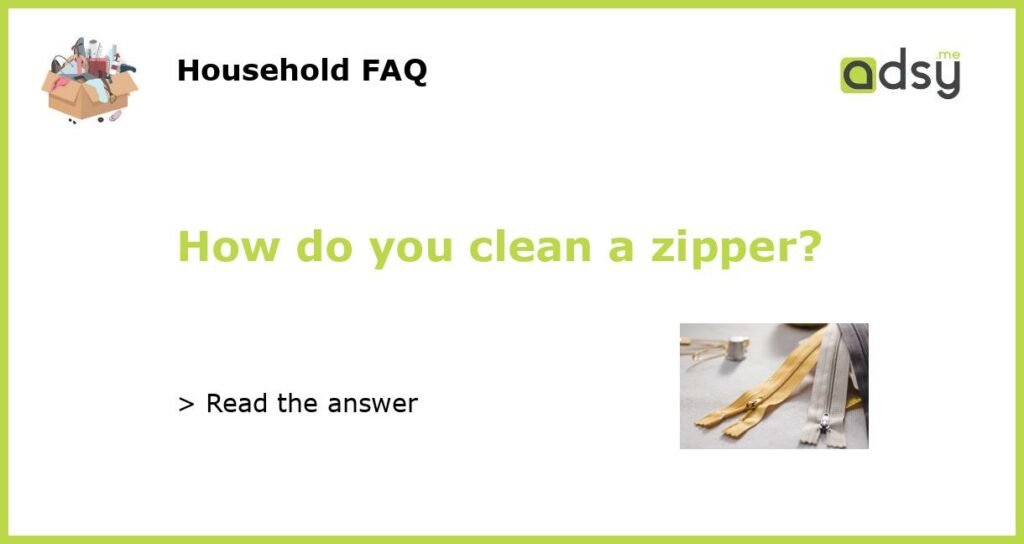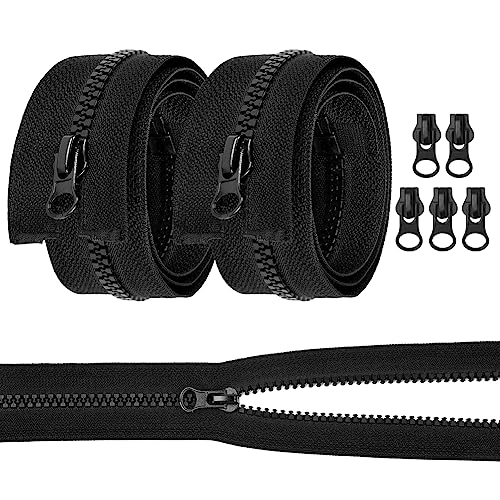5 Tips for Cleaning a Zipper
Zipper malfunctions can be quite frustrating, especially when you’re in a rush or dealing with delicate fabrics. Fortunately, cleaning a zipper is a relatively simple process that can extend the life and functionality of your garment or accessory. In this article, we will share five tips on how to clean a zipper effectively.
Use a Toothbrush and Mild Soap
One of the easiest ways to clean a zipper is by using a toothbrush and mild soap. Start by wetting the toothbrush and applying a small amount of soap onto the bristles. Gently scrub the teeth of the zipper, making sure to remove any dirt or grime that may have accumulated over time. Be careful not to apply too much pressure, as this can damage the zipper.
If you’re cleaning a metal zipper, be sure to dry it thoroughly after cleaning to prevent any rust or corrosion. For plastic or nylon zippers, you can let them air dry. Avoid using hot water, as it can cause the zipper’s teeth to warp or deform.
Lubricate the Zipper with a Candle or Wax
If your zipper is sticking or not zipping smoothly, it may be due to a lack of lubrication. Using a candle or wax can help alleviate this problem. First, make sure the zipper is clean from any dirt or debris. Then, run a candle or a block of wax along the teeth of the zipper to add a thin layer of lubrication.
After applying the wax, try zipping the zipper back and forth several times to distribute the lubricant evenly. This method works well for both metal and plastic zippers, but be cautious not to use too much wax as it can leave a residue on the fabric.
Remove Stains with Rubbing Alcohol
If you have a stubborn stain on your zipper, rubbing alcohol can be a useful solution. Dip a cotton swab or cloth in rubbing alcohol and gently rub the stained area of the zipper. The alcohol will help dissolve the stain without damaging the zipper itself.
It’s essential to test the rubbing alcohol on a small, inconspicuous area of the zipper first to ensure it doesn’t cause any discoloration or damage. Always follow the instructions and precautions on the rubbing alcohol bottle.
Try a Zipper Cleaner Solution
If your zipper is still not clean after attempting the previous methods, you may want to consider using a dedicated zipper cleaner solution. These solutions are designed specifically to remove dirt, grime, and stains from zippers effectively.
Follow the instructions on the bottle to properly apply the zipper cleaner solution. Typically, you’ll need to apply the cleaner to the zipper, gently scrub with a soft brush or cloth, and then rinse with water and dry thoroughly. Be sure to choose a cleaner that is suitable for the type of zipper you are cleaning (e.g., metal or plastic).
Prevent Future Zipper Issues with Regular Maintenance
The best way to avoid zipper problems is to practice regular maintenance. Keep your zippers clean by wiping them with a damp cloth after each use. If you notice any loose threads or misaligned teeth, address them promptly to prevent further damage.
Additionally, consider using zipper lubricants or sprays regularly to keep the zippers running smoothly. These products can help reduce friction and prevent sticking or jamming.
Remember, prevention is always better than cure when it comes to caring for your zippers. By incorporating regular maintenance into your routine, you can prolong the lifespan of your zippers and keep them in excellent working condition.






